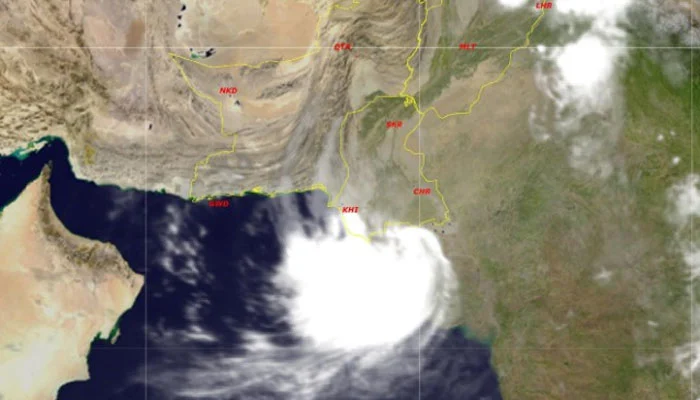The Pakistan Meteorological Department (PMD) warns that the tropical cyclone to hit the Arabian Sea in the next 24 hours. The severe low-pressure system is likely to transform into a cyclonic storm in the next 24 hours.
PMD’s Chief Meteorological Sardar Sarfaraz asserted that if the low pressure develops into a cyclonic storm, it will be named ‘Asna’ which means “highest” and “brightest”. The potential storm is developing in the northeastern Arabian Sea and over India’s Rann of Kutch region. The low-pressure system has been slowly moving west-southwest and is currently situated 270 Km away from Karachi.
The system could reach Sindh’s coastal line by night or tomorrow morning. Environmental convergence such as sea surface temperature and upper-level divergence, are conducive for this system to intensify into a tropical cyclone tomorrow.
Read more: Rains lash India, Pakistan, thousands evacuated
The initial trajectory suggests the cyclone could move towards the west-southwest, impacting Karachi Division, Tharparkar, Badin, Thatta, Sajawal, Hyderabad, Tando Muhammad Khan, Tando Allahyar, Matiari, Umerkot, Mirpurkhas, Sanghar, Jamshoro, and Dadu.
These regions could experience heavy rains with thunderstorms until 31 August.
“During monsoon season, there is approximately a 1% or 2% chance for depression or low pressure to turn into a cyclonic storm or tropical cyclone,” meteorologist Anjum Nazir told Geo News.
Torrential rains can cause flooding in the low-lying areas of Sindh, Southern Punjab, and Balochistan.
In the light of cyclone alert issued by PMD and the Provincial Disaster Management Authority today. Sindh Chief Minister Murad Ali Shah has instructed all relevant departments, including the administration and the municipal bodies, to increase their efficiencies to attend to the possible cases of emergency.
All hospitals have been instructed to enhance their management and ensure the attendance of their staff. Chief Minister had also instructed the fisheries department to instruct fishermen to avoid going into the sea. The Irrigation Department is ordered to monitor the dams of rivers, canals, and other water passages.














